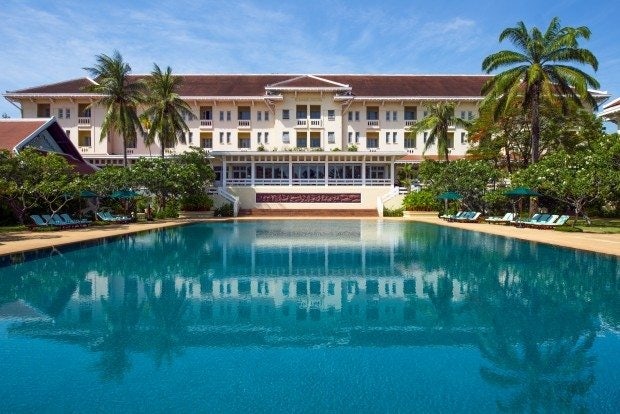
With locations across Asia, the Raffles Hotels & Resorts group is focusing significantly on Chinese tourists not only through mainland China expansion, but also in Southeast Asia as its Siem Reap Raffles Grand Hotel d’Angkor benefits from China’s outbound travel boom to Cambodia.
The Fairmont-owned luxury hotelier has been following an ambitious mainland China expansion plan, announcing yesterday that it will be extending its portfolio to Suzhou in 2020, but it’s also focused on attracting Chinese luxury travelers to its historic Asia-based properties in its original location of Singapore as well as Indonesia and Cambodia.
As Cambodia sees a massive influx of Chinese visitors, the brand’s Siem Reap location is in an especially good position. Set across from Siem Reap’s royal gardens, the historic French colonial and Art Deco-style Raffles Grand Hotel d’Angkor is believed to have opened in 1932 as the Grand Hotel d’Angkor, and throughout the years welcomed guests and dignitaries including Charlie Chaplin, French President Charles de Gaulle, and American First Lady Jacqueline Kennedy Onassis. After being occupied by multiple military regimes and virtually emptied of furnishings during the country’s tumultuous wartime period, the hotel was acquired and refurbished by Raffles in 1996, and reopened in 1997 in all its former glory with a new addition, luxury villas, and Cambodia’s largest swimming pool.
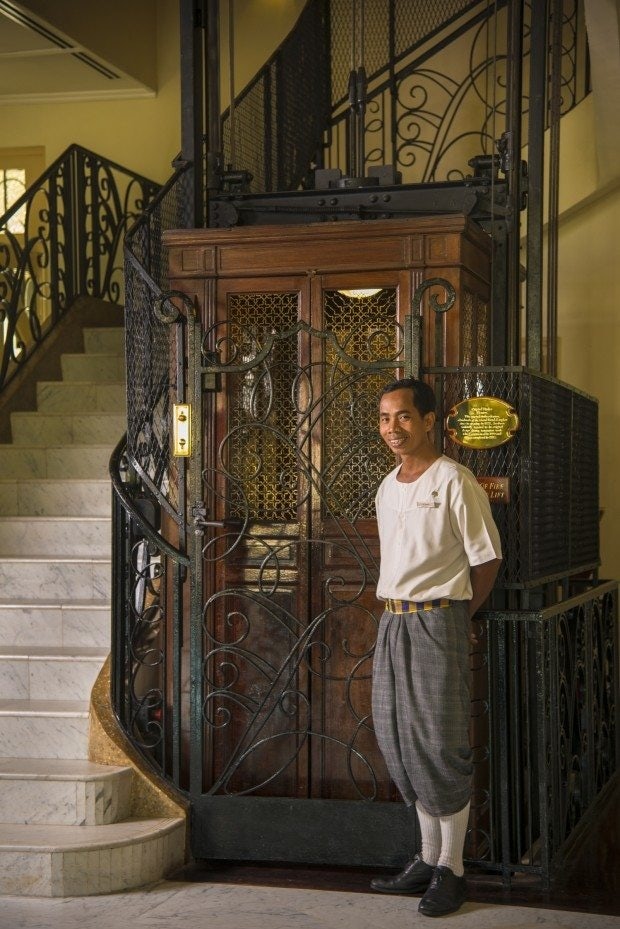
Today, stepping into the hotel lobby is a walk through history with an original cage lift elevator, a mix of colonial-style and Art Deco decor, antiques, and vintage photos of the hotel and illustrious guests who have passed through its black-and-white tiled halls. Guest rooms have old-school fixtures such as four-poster beds, celling fans, and claw-foot bathtubs, and the four “Personality Suites” are named after historic figures, coming complete with their portrait in the entryway. All rooms come with Raffles’ signature “round-the-clock” private butlers, who are on hand to deliver energetic and friendly service at any time of the day or night.
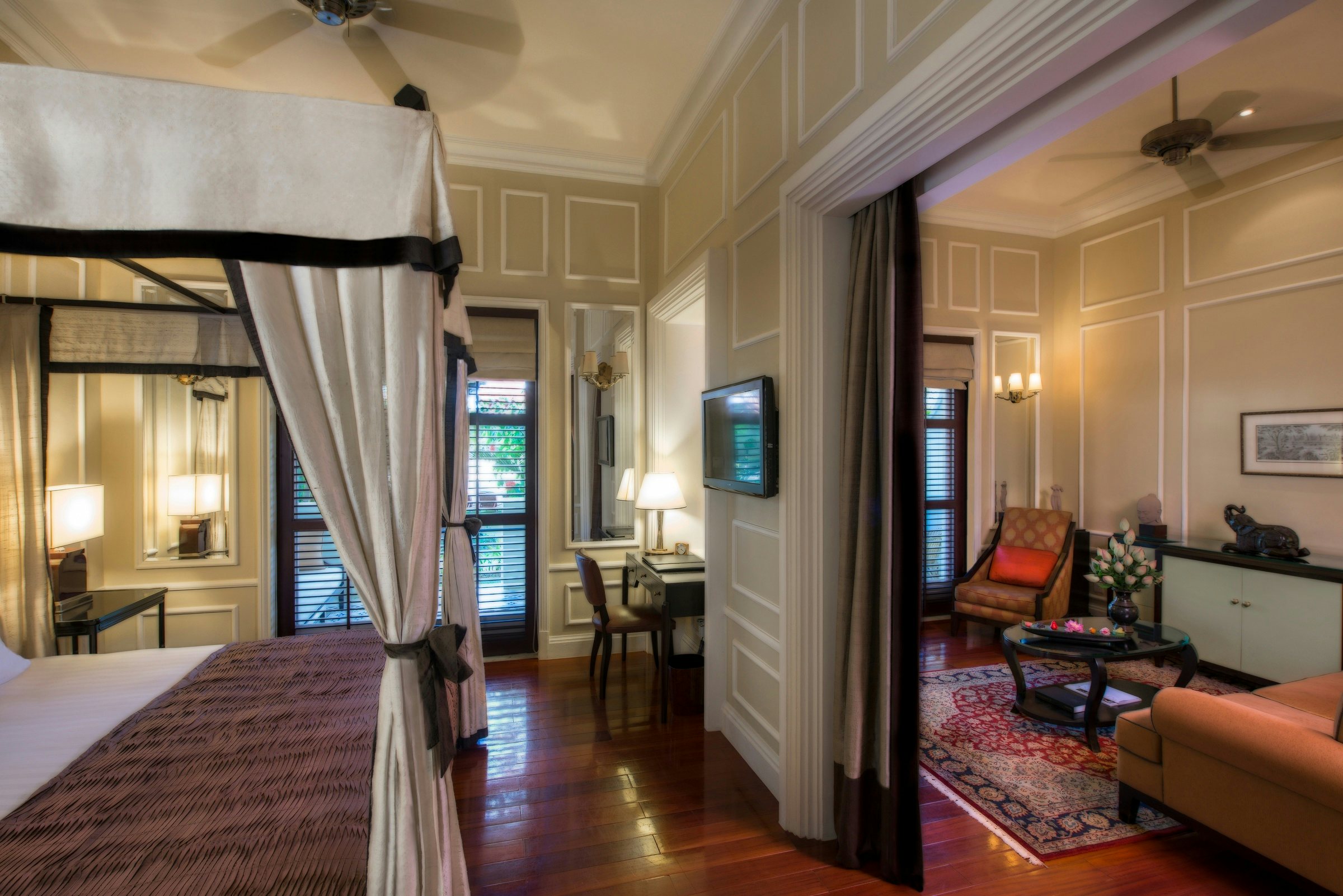
After enjoying Raffles’ Champagne breakfast and visiting the Angkor temples in the morning, guests lounge at the pool, which feels straight out of a Wes Anderson film with its green-and-white striped chairs, bright turquoise color, and view of the vintage-style “Grand Hotel” name emblazoned on the building in gold. They can also enjoy afternoon tea (a top activity for Chinese travelers) in the conservatory to the tune of grand piano music, or sip on the hotel’s signature cocktail, the Airavata (a sister drink to the Singapore Sling of the original Raffles) from one of the leather couches in the elegant dark wood-paneled Elephant Bar.
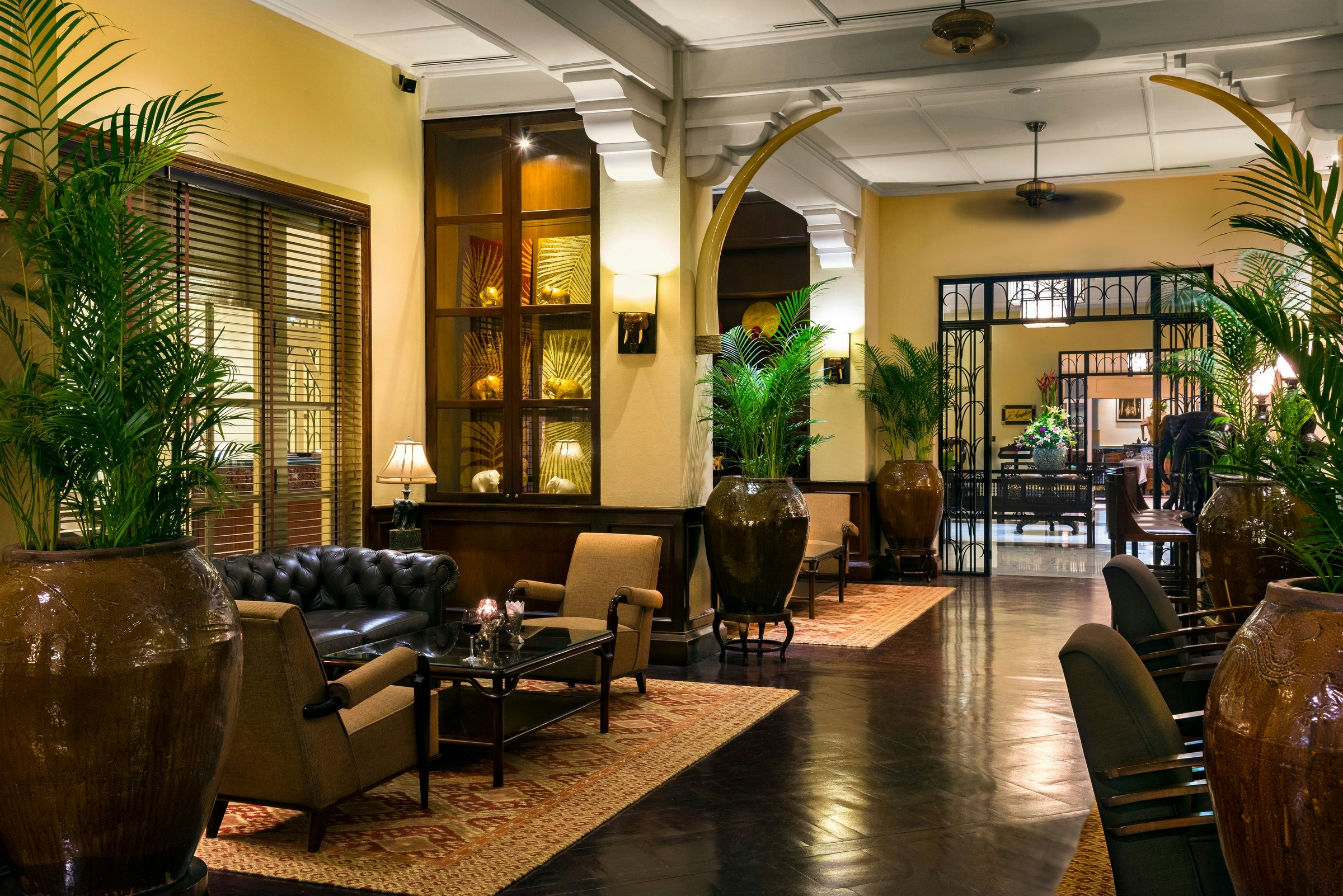
As the hotel is once again host to wealthy tourists, celebrities, and dignitaries alike—Michelle Obama stayed there in 2015—it’s turning its sights toward the Chinese tourist boom to Siem Reap as Chinese visitor numbers to Cambodia grew by 24 percent last year.
Marketed heavily to Chinese tourists is the hotel’s new Apsara Terrace, which features a combination of favorite activities for Chinese travelers—a barbecue buffet and performances by local dancers. The name “Apsara” comes from the traditional Cambodian “Apsara” dancers, who perform nightly along with Khmer martial artists. As the Apsara dance show/buffet combination is immensely popular with Chinese tour groups at restaurants across Siem Reap, the Raffles provides one of the most upscale versions of the experience in the city.
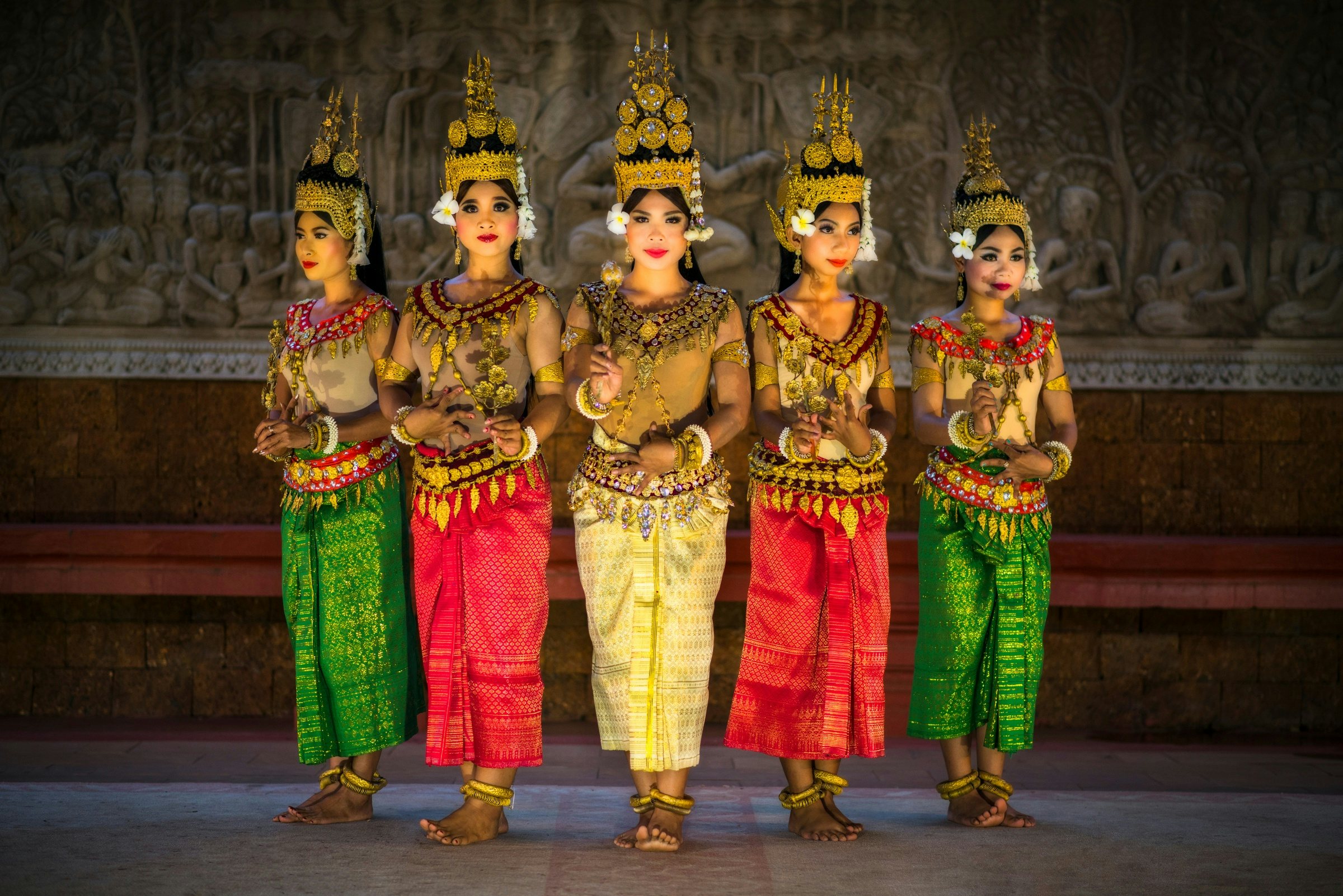
Meanwhile, the hotel’s fine dining restaurant Restaurant Le Grand serves traditional Khmer cuisine literally fit for a king, as it takes care of all the catering for the royal family when they’re in town at the royal residence across the gardens (which are also maintained by Raffles). The recipes have been passed down through Khmer royal families over centuries and can be enjoyed through a multi-course royal tasting menu.
While Chinese tourists in Siem Reap are known for traveling in groups and staying in budget accommodations so they can splurge on shopping, wealthy travelers are increasingly opting to travel with family members and invest in five-star accommodations. This comes as market research shows an increased interest in unique experiences among wealthy Chinese travelers as they budget more for hotels, spas, and fine dining on their trips.
Raffles has high hopes for the continued growth of China’s travel market, which is a major priority for the brand. In addition to the newly announced Suzhou location, two of its 10 properties worldwide are already located in mainland China, including Raffles Beijing, which opened in 2006, and Raffles Hainan, which opened in 2013. The total number of mainland locations will be four by 2020, as the company also has a property slated to open in Shenzhen in 2019.